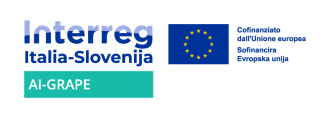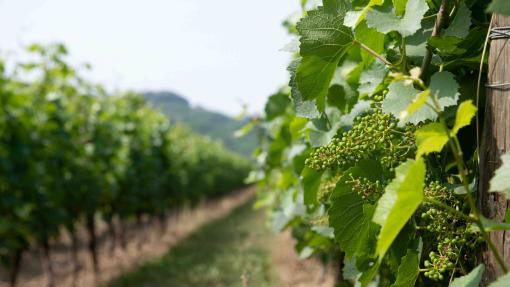In viticulture, we are constantly seeking ways to improve production. With knowledge, we support higher and better-quality yields. New technology greatly contributes to this effort, as it simplifies various tasks, improves their precision, and reduces costs. It also enables faster responses to specific events and more targeted actions. Unmanned aerial vehicles or drones are one of these newer technologies, showing great potential for broader use in viticulture.
Precision viticulture for better decisions
Today, a lot of attention is given to precision viticulture. The aim is to enable more efficient decision-making in vineyard management by using technology and analytical methods. Such information allows winegrowers to allocate available resources more efficiently and respond more quickly to various phenomena. Data collection can be performed on the ground using various sensors, either stationary or mobile. This method provides excellent data; however, spatial, temporal, and financial limitations often prevent thorough monitoring of larger areas. Vineyards typically cover extensive areas, with thousands of vines per hectare, making complete physical monitoring difficult to achieve. A potential solution lies in drones equipped with different cameras that can collect massive amounts of data from the air in just a few minutes—something that would take a person several hours to accomplish.
Drones – the winegrower’s eyes in the sky
To collect data, we use thermal, multispectral, and hyperspectral cameras. Each captures data in different spectral ranges, meaning they reveal what the human eye cannot see. Depending on the desired data precision, we can adjust the flight altitude over the vineyards. Research shows that the most suitable height is usually between 25 and 50 meters above the ground. The collected data is then used to generate images that reflect the spectral characteristics of the vines. Like other plants, grapevines respond to various environmental stimuli. These responses can be physiological (e.g., increased leaf temperature) or metabolic (e.g., changes in the concentration of a certain metabolite). These changes appear in specific spectral ranges and can only be detected by the mentioned cameras. In certain conditions, we can observe differences between vines, indicating that something is happening.
At this stage, the data by itself doesn’t yet tell us much, since the interpretation must be adapted to the specific characteristics of the vineyard being monitored. To give the data meaning, it must be calibrated with ground-based measurements of known, established physiological parameters that better explain vine condition. To extract more concrete information from this data, various indices and models have been developed—and are still being improved—that directly explain vine status based on data collected by the cameras. Naturally, to make these indices and models truly usable, much more research is still needed, even though the technology is sometimes presented as already highly advanced.
AI-GRAPE Project – an innovation for vine protection
Using drones, we will collect data on vineyard conditions and combine it with relevant ground-based and weather data in order to build a model that predicts an increased likelihood of three harmful vineyard pests: the American grapevine leafhopper, the European grapevine moth, and the European grape berry moth. This model will support more effective decision-making for protection measures. Consequently, it will provide economic benefits for winegrowers while also reducing the environmental impact of plant protection products by helping winegrowers determine the right time and location for applying these measures.
Of course, various questions arise during the project. These pests cause different types of damage. The American grapevine leafhopper transmits phytoplasma, which causes the incurable disease known as Flavescence dorée, leading to vine death. The two moths cause physical damage to flowers and later to grape clusters. In the first case, the reaction occurs across the entire plant, while in the second, the damage is localized and might not be visible throughout the vine. As mentioned, the cameras can detect certain spectral response intensities, but the changes are most visible when they affect a broader area. In the case of the moths, which only cause point damage, there is some doubt whether this can be detected using cameras.
The future of technology in viticulture
Naturally, this is just the beginning. For now, this technology is still financially inaccessible to average winegrowers. As such, it is mostly used in research environments or by very large producers with greater financial resources. Nevertheless, the technology is expected to evolve rapidly and become more accessible, as it holds enormous potential. In the near future, we can expect the development of better and more affordable drones, cameras, and software, making them available to a broader range of winegrowers and allowing for even more precise and efficient data collection from vineyards.

